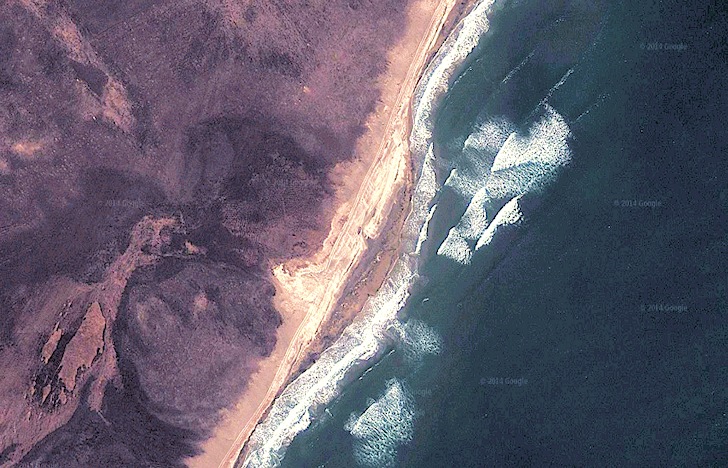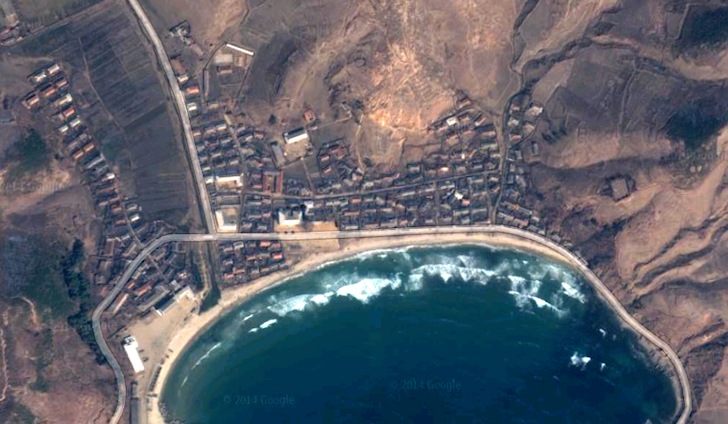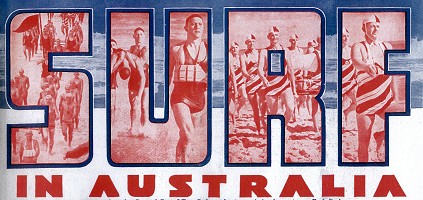BEST SURF SPOTS IN LEBANON
SIR and SIDON to the south of Lebanon have really only now been discovered by Australian surfers travelling to Lebanon to visit distant relatives.
The points around these towns are being watched with much interest to assess long term surfability and frequency.
The main timings for the sirocco and mistral swells and winds are in the Northern Hemisphere Autumn and Spring (March and November).
This would probably be the best time to plan your Mediterranean surf trip, though sitting this far east in the sea will give you the best chance of catching any swell generated from favourable weather systems.
Another source of swell is the storm cells of the North Atlantic. Many of these cells descend along the Irish coastline and then outwards along the Atlantic Coast. Occasionally certain cells in Winter (Dec-Jan) can sweep across southern Spain and into the Med. This is a rare but notable event that can send swell hurtling in a 360 degree radius, lighting up points and reefs that see rideable surfing options maybe once or twice per year.
A beautiful country, but very concerned about violence due to war conflicts, with only moderate surfing potential (it is the Med after all), but as everywher... keen surfers making the best of what they've got!
Location: Middle East, bordering the Mediterranean Sea,
between Israel and Syria
Geographic coordinates: 33 50 N, 35 50 E
Climate: Mediterranean; mild to cool, wet winters with hot, dry summers; Lebanon mountains experience heavy winter snows
Terrain: narrow coastal plain; Al Biqa' (Bekaa Valley) separates Lebanon and Anti-Lebanon Mountains
Level of surfing: beginners
Quality of surf: average
Coastline: 225 km
Natural hazards: dust storms, sandstorms
Other Hazards: War/conflict
Best mohths: October-December
Currency: Lebanese Pound (LBP),
Special Requirements: private beaches, Special Pass/Permits,
Lengthy VISA process
ALMINA / MOSTAFA'S SPOT
Go by car from Beirut like 22km reaching the village JIEH near marina beach.
In summer, when there are waves, u can surf all day.
In winter, u should surf from 5:00am untill 10:00am, because after that the winds grows...
General
Surf boards for rent can be found at Mostafa's place.
For further info, contact Mostafa by e-mail: love_guivara@hotmail.com
SURF SPOT QUALITY
Wave qualityWorld Class
ExperienceAll surfers
FrequencyVery consistent (150 day/year)
WAVE
TypeReef-rocky
DirectionRight and left
BottomFlat rocks
PowerPowerful
Normal lengthShort (< 50m)
Good day lengthNormal (50 to 150m)
TIDE, SWELL AND WIND
Good swell directionWest
Good wind directionSouthWest
Swell sizeStarts working at 1.0m-1.5m / 3ft-5ft and holds up to 1m+ / 3ft+
Best tide positionLow tide only
Best tide movementRising and falling tides
MORE DETAILS
Week crowdEmpty
Week-end crowdFew surfers
AWUALI RIVERMOUTH / STADIUMS
Very easy to find, right off the main north/south highway between Beirut and Sidon. The rivermouth right before the new stadium in northern Sidon.
Rivemouth left, inconsistent and pollution problems a minus, but when sandbar is set up looks to offer long (for the med) lefts off the rivermouth. Best on the first day of a windswell as any consistent swell activity could chew up the sandbar. Fertilizer run off and chemicals from nearby farms pose the biggest health risk...
Atmosphere:
Even it is flat, you are in Lebanon, you get great food and people, so enjoy yourself! And the women are amongst the most beautiful in the world.
SURF SPOT QUALITY
Wave qualityNormal
ExperienceAll surfers
FrequencySometimes break
WAVE
TypeSand-bar
DirectionLeft
BottomSandy
PowerHollow, Fun
Normal lengthNormal (50 to 150m)
Good day lengthNormal (50 to 150m)
TIDE, SWELL AND WIND
Good swell directionWest, SouthWest
Good wind directionEast, NorthEast
Swell sizeStarts working at 1.0m-1.5m / 3ft-5ft and holds up to
Best tide position
Best tide movement
MORE DETAILS
Week crowdEmpty
Week-end crowdEmpty
DANGERS
- Pollution
BATROUN/COLONEL
When coming from Beirut driving on the old Sea highway u’ll reach this beach on ur entrance. In order to reach the spot by car u should take a hidden old gravel road, u can get there by car and 4x4 (if u wanna take this road it’s better to ask a local to show u the way it’s only 150 m long).
What I suggest is to reach it through another Beach it’s called “Blue Bay”. It’s easy to find with it’s parking lot it’s right on the road. The site is connected to Blue Bay & once ur at Blue Bay u can see the surf at “Colonel”.
It’s a 5 minutes march and if want u can paddle to get there (u might be lucky and catch the big waves on ur way there.) Colonel is a rocky reef with big and fast waves. Sometimes u’ll have to share it with the windsurfers who are common in Batroun. There’s also a lot of body borders.
Contrary to Blue bay Colonel is a ruff environment for swimmers so u won’t have any hassle from swimmers. U’ll have the site for u and some other extreme sports Lovers (Ocean Kayakers, Windsurfers, Body Borders & so on….) if u wanna stick around there’s a Tent on the beach (for the Local surfers & windsurfers) u can always put ur stuff in it. The waves arrive to Colonel by consecutive groups ranging from 3 to 5 waves, so there are a lot of waves for everybody. Parking space is available n abundance. U can even enjoy the beach and the girls while ur there.
Atmosphere:
Because of it’s location next to Blue Bay (from where the surfers head out to the spot) & one of the most frequented beach in the area. U can always make ur grand entrance (there’s a lot of sexy Girls & Guys so u can always find ur self a nice companion for “SUPPORT”). Plus in order to keep the atmosphere between the Surfers & windsurfers High & competitive the local surfers formed 2 gangs the “Pirate” gang with it’s own tent “Headquarters” on one side of the beach & the “Hurricane gang on the other side also with there own “Headquarters”. These 2 gangs are so crazy and into surfing that sometime they head out to surf on Windsurfing boards plus some make there own hand made surfboards. Batroun in all is a beach town with its old souk and fishing port. In summer it’s packed with tourists, with its many night clubs & pubs. It’s the night Capital of North Lebanon. It’s a very smooth and nice atmosphere. U can chill on the beach or go and hit the dance Flores of its many clubs. The people are nice u’ll find urself welcomed between them. Batroune mainly receive European tourist so u can always find urself in one of the groups. Let’s not forget that u can camp on the Golden sandy beach.
It's lebanon and every body know that lebanon have the most beautifull atmosphere, so you would be pleased to come and see :)
General:
This spot is one of the best in Lebanon. Extreme Surfing lovers & smooth riders can find themselves in this spot.
SURF SPOT QUALITY
Wave qualityNormal
ExperienceExperienced surfers
FrequencyRegular
WAVE
TypeReef-rocky
DirectionRight and left
BottomReef (coral,sharp rocks etc..) with sand
PowerHollow, Fast, Fun
Normal lengthNormal (50 to 150m)
Good day lengthNormal (50 to 150m)
TIDE, SWELL AND WIND
Good swell directionNorthEast
Good wind directionNorthEast
Swell sizeStarts working at Less than 1m / 3ft and holds up to 2m+ / 6ft+
Best tide positionLow and mid tide
Best tide movementRising and falling tides
MORE DETAILS
Week crowdEmpty
Week-end crowdEmpty
DANGERS
- Rocks
CASINO/ M3 Ameltein
Very easy access from the road just under Casino du Liban in Jounieh.
SURF SPOT QUALITY
Experience
All surfers
FrequencySometimes break
WAVE
TypeBeach-break
Bottom
Sandy with rock
PowerFast, Fun
Normal lengthNormal (50 to 150m)
TIDE, SWELL AND WIND
Good swell directionEast
Swell size
Starts working at 1.5m-2m /5ft-6ft and holds up to 5m / 16 ft and over
MORE DETAILS
Week crowdFew surfers
Week-end crowdFew surfers
DANGERS
- Rocks
JONAS BEACH
25 km south of Beirut, motorway, Jyé exit.
Left, cross Jyé village, at the gas station go straight.
(Jonas Beach sign on the right.)
Jonas Beach is a private resort. Owner (Nassif) is a real waterman.
If you come during winter, the resort is closed but he will let you in.
During summer, fees are 10 000 LL (6,5 $) but you get a parking space,
a beach umbrella, armchairs, showers, cloakroom and access to a cheap restaurant.
From there, you can walk to the next spot (Galleon).
Atmosphere:
When you are in Beirut check the swell size at Ramlet el Baydah
(the beach close to the Summerland, south of Beirut).
Double this size and you get a figure of what you can expect at Jonas beach.
Definitively, this bay worth the trip from Beirut. If the swell is too small for surfing at Jonas, go to Phil and Did where the reef enhance the size of the waves (and it is public access).
General:
One of the best private beach, French expats and beautiful local girls go there.
Walk 5 min north by the beach and have a drink at Bamboo bay resort.
Even more beautiful girls...
I have seen Jonas with 3m waves … twice (within 2 years !).
But it is often suitable for longboard.
Wind swells are the only thing that break here, and they last only a day or so.
If it is totally flat (quite often during summer) rent a perissoire.
It is a sort of flat small boat. Fisherman were used to go out standing on it with a paddle.
Jieh beach is the most relaxing and welcoming beach in Lebanon. Surfing is best in September and October. Come joine and explore!!!
SURF SPOT QUALITY
Wave qualitySloppy
ExperienceBeginners wave
FrequencySometimes break
WAVE
TypeBeach-break
DirectionRight and left
BottomSandy with rock
PowerPowerless
Normal lengthShort (< 50m)
Good day lengthNormal (50 to 150m)
TIDE, SWELL AND WIND
Good swell directionNorthWest, West, SouthWest
Good wind directionSouthEast, East, NorthEast
Swell sizeStarts working at Less than 1m / 3ft and holds up to 2.5m+ / 8ft+
Best tide positionAll tides
Best tide movementRising and falling tides
MORE DETAILS
Week crowdEmpty
Week-end crowdFew surfers
DANGERS
- Man-made danger (buoys etc..)
KOOSA
This place is great and is slightly better than Batroun Beach.
Atmosphere:
The atmosphere to this beach is always amazing during the summer.
There is almost nobody their and it's like having a whole beach to you and your friends. People are always very nice and always appreciate you being there.
SURF SPOT QUALITY
Wave qualityRegional Classic
ExperienceExperienced surfers
FrequencyRegular
WAVE
TypeBeach-break
DirectionRight and left
BottomSandy
PowerHollow, Fast, Fun
Normal lengthNormal (50 to 150m)
Good day lengthLong (150 to 300 m)
TIDE, SWELL AND WIND
Good swell directionNorthWest
Good wind directionNorthEast
Swell sizeStarts working at 1.0m-1.5m / 3ft-5ft and holds up to 3m+ / 10ft+
Best tide positionMid and high tide
Best tide movementRising tide
MORE DETAILS
Week crowdEmpty
Week-end crowdEmpty
MOSTAFA SPOT / AKIF'S REEF
South of Beirut (motorway), about 20 km. Jyé village.
Turn right at the "Porpheron beach" sign. Straight down.
On the right side of the Pier.
Check the reef configuration before going out.
There is a channel on the left side of ths spot, along the pier.
Don't go too far north (Syrian Camp), they will ask you to leave!
After the surf, have a drink at Akif's place (the red Coca-cola small cafe).
Akif will also keep your car and your belongings. On top of that he will offer you a cofee :) Give him 3 000 LL (2 $) for parking fees when you'll be leaving.
Atmosphere:
Nobody is surfing there, except one local, Mustapha.
He lives in front of the spot. He is fed up of surfing alone!
This guy learned all by himself...
When you are in Beyrouth check the swell size at Ramneit el Baida
(the beach close to the Summerland, south of Beirut).
Double this size and you get a figure of what you can expect at Jyé.
General:
One of the best spot of the country. Nice surroundings.
In summer, if it is flat, check Bamboo bay and Jonas private beaches
(but you can walk by the sea front 15 mn from Akif's).
It's south of Jyé.
Anyway, don't miss the beach parties on saturday night at Bamboo (from June to September).
SURF SPOT QUALITY
Wave qualityRegional Classic
ExperienceAll surfers
FrequencySometimes break
WAVE
TypeReef-rocky
DirectionRight
BottomFlat rocks
PowerFun
Normal lengthShort (< 50m)
Good day lengthNormal (50 to 150m)
TIDE, SWELL AND WIND
Good swell directionNorthEast
Good wind directionWest
Swell sizeStarts working at Less than 1m / 3ft and holds up to 2m+ / 6ft+
Best tide positionAll tides
Best tide movementRising and falling tides
MORE DETAILS
Week crowdEmpty
Week-end crowdEmpty
DANGERS
- Urchins
- Rocks
NAHR BRAHIM
It is north of Beirut b4 jbeil where the river Nahr Brahim reach the sea.
You can acces it free just in front of Byblos Bank.
Plenty of space to park the car and easy to find the beach, you need big waves to surf this spot, but once it brakes it's a long wave to surf...
Althought the river water makes it a bit cold, so it is better to surf it in the hot summer.
SURF SPOT QUALITY
Wave qualityRegional Classic
ExperienceAll surfers
FrequencySometimes break
WAVE
TypeRivermouth
DirectionRight and left
BottomSandy
PowerFast
Normal lengthNormal (50 to 150m)
Good day lengthLong (150 to 300 m)
TIDE, SWELL AND WIND
Good swell directionWest, SouthWest
Good wind directionNorthWest, West, SouthWest
Swell sizeStarts working at 1.5m-2m /5ft-6ft and holds up to 4m+ / 12ft
MORE DETAILS
Week crowdFew surfers
Week-end crowdCrowded
OASIS BEACH / IL OASIS
This spot is hard to find with private access. You should take a car to reach it.
SURF SPOT QUALITY
Wave qualityNormal
ExperienceBeginners wave
FrequencyRegular
PIERRE AND FRIENDS
SURF SPOT QUALITY
Wave qualityRegional Classic
ExperienceExperienced surfers
FrequencySometimes break
WAVE
TypeReef-rocky
Direction
BottomFlat rocks
PowerFast
Normal lengthShort (< 50m)
TIDE, SWELL AND WIND
Swell size
Starts working at 2m-2.5m / 6ft-8ft and holds up to 4m+ / 12ft
MORE DETAILS
Week crowdFew surfers
Week-end crowdFew surfers
DANGERS
- Rocks
RAMLET EL BAYDACH
Drive Down the Corniche Road, turn south at "The Grand Cafe Restaurant". The long stretch of sandy beach is the spot (very hard to miss).
This spot is really only active after a storm, the pictures attached are the day after a very windy 2 days of rain. Hence it was somewhat polluted and the waves are the largest probably in all year.
Atmosphere:
This spot would go off if only the fetch was bigger (not really an option is it :).
Wind swells are the only thing that break here, and they last only a day or so, no ground swells... :(
SURF SPOT QUALITY
Wave qualityNormal
ExperienceAll surfers
FrequencySometimes break
WAVE
TypeBeach-break
DirectionRight and left
BottomSandy with rock
PowerOrdinary, Fun, Powerless
Normal lengthShort (< 50m)
Good day lengthNormal (50 to 150m)
TIDE, SWELL AND WIND
Good swell directionNorthWest, West, SouthWest
Good wind directionSouthEast, East, NorthEast
Swell sizeStarts working at 1.0m-1.5m / 3ft-5ft and holds up to
Best tide position
Best tide movement
MORE DETAILS
Week crowdEmpty
Week-end crowdEmpty
DANGERS
- Pollution
CHEKKA / SANDY BEACH
This is definitively the best spot in Lebanon
during the biggest storms/swell since it's protected from the south
by the Point of Chekka.
The spot is situated right after passing the tunnel of Chekka
(~50 km from Beirut).
There's a long pier perpendicular to the Sandy Beach.
The point is on the left of the Pier.
Beautiful rights. The pictures unfortunately were taken
on the inside break....
Enjoy....
When you're cought on the inside the break can be very powerful so you can climb on the pier and walk pass the break and go back in the water.
After the Tunnel first main exit is Chekka.
When you're out go toward the beach then go South for about 1 km.
There is a very small sign on the right that says "Sandy Beach"
- take this narrow street which will get you to the spot.
On the map it's between Tam Tam and Tripoli.
(This spot breaks only when the waves at Tam Tam or in Batroun are more than 2 meters....)
SURF SPOT QUALITY
Wave qualityRegional Classic
ExperienceAll surfers
FrequencyRarely break (5day/year)
WAVE
TypeBreakwater/jetty
DirectionRight
BottomSandy
PowerPowerful
Normal lengthNormal (50 to 150m)
Good day lengthNormal (50 to 150m)
TIDE, SWELL AND WIND
Good swell directionSouthWest
Good wind directionSouthWest
Swell sizeStarts working at 2m-2.5m / 6ft-8ft and holds up to 4m+ / 12ft
Best tide positionAll tides
Best tide movement
MORE DETAILS
Week crowdEmpty
Week-end crowdEmpty
TAM TAM / ECH AL ASAFIR (BIRDS NEST)
North of Beirut - exit at Byblos (Jbeil) and ask for Tam Tam Beach.
The best spot is on the right of the beach near the rocks.
SURF SPOT QUALITY
Wave qualityNormal
ExperienceAll surfers
FrequencyDon't know
WAVE
TypeBeach-break
DirectionRight and left
BottomSandy
PowerOrdinary
Normal lengthShort (< 50m)
Good day lengthNormal (50 to 150m)
TIDE, SWELL AND WIND
Good swell directionSouthWest
Good wind directionSouthWest
Swell sizeStarts working at 1.0m-1.5m / 3ft-5ft and holds up to 3m+ / 10ft+
Best tide positionAll tides
Best tide movement
MORE DETAILS
Week crowdEmpty
Week-end crowdEmpty
WHAT TO PACK TO GO TO LEBANON?
Essentials: sunscreen in summer; good walking shoes.
No need to worry about cash - plenty of ATM's in the cities.
Make sure you pack according to the season. Going in winter will require warm clothes. In summer it can ger very hot and humid, so take some cooling clothes. Windproof and waterproof clothes will be good. As usual, bring all medical things u need with you, as in some remote parts of the country it can be difficult to get them.
All the gear if you plan to camp: a good sleeping bag and tent that are good for very low temp; special gas container u can use for heating food and water; a sturdy backpack or a cargo pack with a good daypack. Invest in a portable water filter or at least take some puri-tabs or boil the water.
The source: http://www.surfingatlas.com/country/111
http://www.wannasurf.com/spot/Middle_East/Lebanon/index.html



































